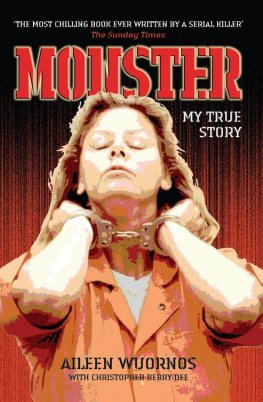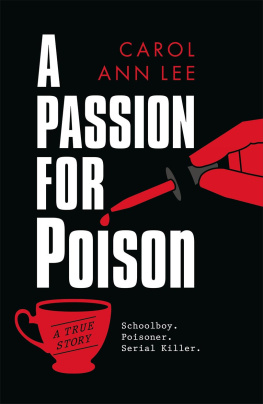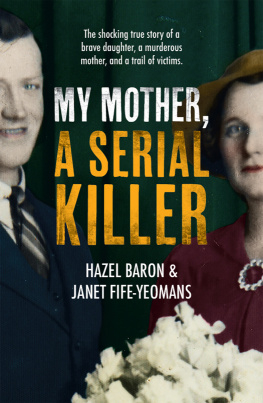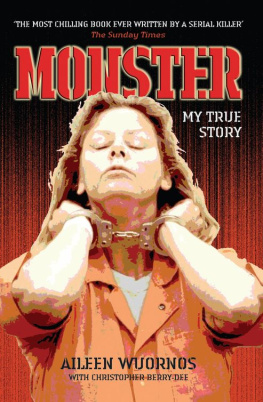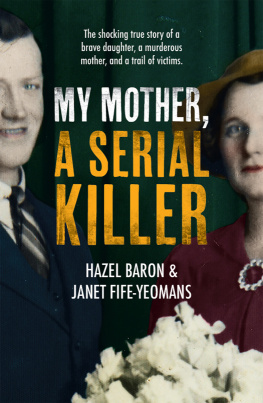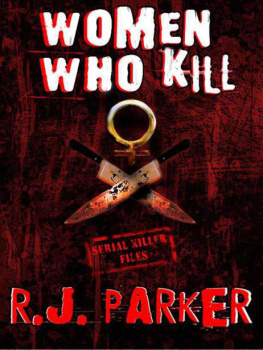The Mammoth Book of
WOMEN WHO KILL
Also available
The Mammoth Book of Arthurian Legends
The Mammoth Book of Battles
The Mammoth Book of Best New Erotica
The Mammoth Book of Best New Horror 12
The Mammoth Book of Best New Science Fiction 14
The Mammoth Book of Bridge
The Mammoth Book of British Kings & Queens
The Mammoth Book of Cats
The Mammoth Book of Chess
The Mammoth Book of Comic Fantasy
The Mammoth Book of Erotica (New Edition)
The Mammoth Book of Endurance and Adventure
The Mammoth Book of Fantasy
The Mammoth Book of Gay Erotica
The Mammoth Book of Great Detective Stories
The Mammoth Book of Haunted House Stories
The Mammoth Book of Heroic and Outrageous Women
The Mammoth Book of Historical Erotica
The Mammoth Book of Historical Whodunnits
The Mammoth Book of How It Happened
The Mammoth Book of How It Happened in Britain
The Mammoth Book of International Erotica
The Mammoth Book of Jack the Ripper
The Mammoth Book of Jokes
The Mammoth Book of Legal Thrillers
The Mammoth Book of Lesbian Erotica
The Mammoth Book of Lesbian Short Stories
The Mammoth Book of Life Before the Mast
The Mammoth Book of Locked-Room Mysteries and Impossible Crimes
The Mammoth Book of Men OWar
The Mammoth Book of Murder
The Mammoth Book of Murder and Science
The Mammoth Book of New Erotica
The Mammoth Book of Oddballs and Eccentrics
The Mammoth Book of Private Lives
The Mammoth Book of Puzzles
The Mammoth Book of Pulp Action
The Mammoth Book of Seriously Comic Fantasy
The Mammoth Book of Sex, Drugs & Rock n Roll
The Mammoth Book of Short Erotic Novels
The Mammoth Book of Soldiers at War
The Mammoth Book of Sports & Games
The Mammoth Book of Sword & Honour
The Mammoth Book of The West
The Mammoth Book of True Crime (New Edition)
The Mammoth Book of True War Stories
The Mammoth Book of Unsolved Crimes
The Mammoth Book of Vampire Stories by Women
The Mammoth Book of War Correspondents
The Mammoth Book of UFOs
The Mammoth Book of the Worlds Greatest Chess Games
The Mammoth Encyclopedia of Science Fiction
The Mammoth Encyclopedia of The Unsolved

Constable & Robinson Ltd
3 The Lanchesters
162 Fulham Palace Road
London W6 9ER
www.constablerobinson.com
First published in the UK by Robinson,
an imprint of Constable & Robinson Ltd 2002
Arrangement and introduction copyright by
Richard Glyn Jones 1993, 2002. Rosemary West:
Keeping It in the Family, first published in this edition,
copyright Richard Glyn Jones 2002
All rights reserved. This book is sold subject to the condition that it shall not, by way of trade or otherwise, be lent, re-sold, hired out or otherwise circulated in any form of binding or cover other than that in which it is published and without a similar condition including this condition being imposed on the subsequent purchaser.
A copy of the British Library Cataloguing in Publication Data is available from the British Library.
ISBN 978-1-84119-388-5
ISBN 1-84119-388-7
eISBN 978-1-78033-367-0
Printed and bound in the EU
10 9 8 7 6 5
Introduction
Writers about murder, especially male writers, tend to go off the rails when they talk about female killers. They quote Kipling (often inaccurately) about the female of the species being deadlier than the male, they wax lyrical about the excesses of the fairer or the gentler sex, and often seem to be half in love with their subjects when they write about the delectable Madeleine Smith (who callously poisoned her superfluous lover) or naughty Miss Lizzie Borden (who hacked her parents about their respective heads with an axe). Either that orif the murderesses do not lend themselves to such flirtatious treatmentthey tend to talk about great monsters of history or of Modern Medusas. One account of the Ruth Snyder/Judd Grey case, a fairly standard suburban love triangle though a particularly vicious one, is entitled Messalina and the Corset Salesman. It can be entertaining stuff, especially if one has a taste for gallows humour, but it cannot be said to offer very insightful or even particularly accurate explanations of what drives women to kill.
A more recent phenomenon has been the feminist, or at least quasi-feminist, study of women as criminals, offering a great deal more in the way of social background and often casting valuable light on the circumstances that turn women into murderesses; for, these books argue, women have often been driven to such extremes of behaviour by their disadvantaged social status or by their own repressed conditions, which now and again explode into violence. Such studies are on the whole very welcome, although in their more extreme or radical manifestations they can be as silly as the other writers, tending to exonerate women from any taint of blame, still less of being bad orperish the thoughtevil, on the grounds that Men drove them to it. Some even advance the dangerous notion of female killers (of men) as feminist heroes and role modelsthe Amazon approachpresumably on the grounds that any woman who destroys men is advancing the cause, though God knows the concept of Lizzie Borden as a pioneering feminist is ludicrous enough.
In editing this collection of forty-nine notorious women I have tried to avoid the worst excesses of both these approaches, though moderate examples of each style are to be found in the pages that follow. Overall, I have tried to choose balanced accounts by good writers offering lively portraits of these women, who range from the very bad to the merely unfortunate. There is, despite the radical feminists and the social theorists, simply no getting away from the fact that in the end some murderers can only be described as evil: of the females, Countess Bathory, Elizabeth Brownrigg, Irma Grese and Jeanne Weber (to name just a few of the ones included here) seem so far beyond compassion or redemption that apologists would have an extremely difficult time accounting for their actions, and we are left with words like wicked and evil for them. Others such as Ruth Ellis, Edith Thompson and Alma Rattenbury seem to be women caught up in emotional tangles that ran out of control, and they may invite our strong sympathy. Indeed, I should make it clear at this point that by no means all of the women included in the book should necessarily be regarded as murderers; some were never caught or were acquitted at trialthough many have had grave doubts about the innocence of Lizzie Borden, for instance!whilst others were found guilty and imprisoned or hanged when they may well have been innocent, or unfairly tried. Most people who have studied the case feel that Ruth Ellis, for one, should not have been hanged.
Nonetheless, these are all accounts of women who have been accused of or tried for murder, and having read widely on the subject I would like to be able to offer my own thesis as to what drives women to killto present my own theory at this pointbut alas I have none. Looking at these appalling or tragic stories convinces me only that women are as diverse and interesting as any other subdivision of humanity, and if once they tended to employ poison rather than weapons of violence, that is no longer the case. The case of Aileen Carol Wuornos suggests that these days womens crimes are not much different from mens, which is equality of a sort if not a very welcome manifestation of it.
To bring things up to date for this new edition I have added my own account of the case of Rosemary West, the most appalling multiple tragedy of recent years. In between, I have concentrated on domestic or hands-on murders and tended to exclude political assassins such as Ulrika Meinhofand, for that matter, Lucrezia Borgia and Catherine the Greatand female gangsters and outlaws like Bonnie Parker and Belle Starr. These considerations apart, I have simply tried to include the most notable and interesting murder cases involving women, and as it turns out there are about fifty that stand out from the crowd. Since the male sex is responsible for 80 per cent of all the crime that is committed (some authorities put the figure as high as 90 per cent), the women who do achieve notoriety in this way are unusual and almost inevitably fascinating. Some will disagree with my selection, pointing to certain omissions, but I found that some cases are very similar to one another (domestic poisonings, jealous women with guns) and have opted for variety and interest rather than encyclopaedic thoroughness. This has, however, enabled me to include some out-of-the-way cases that the reader might otherwise have missed: in particular, I had to look long and hard to find a good account of the aforementioned Countess Bathory, who is credited in
Next page

